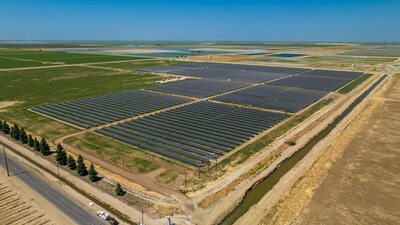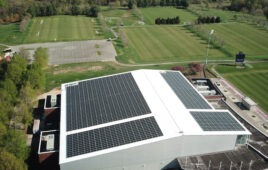
The Fresno DAC Community Solar Project.
Construction has begun on the Fresno Disadvantaged Community (DAC) Solar Farm, the largest shared solar project for disadvantaged communities in California and the first utility-scale solar farm within Fresno. The 10-MW system will provide energy cost savings directly to qualifying low-income residents under PG&E’s Disadvantaged Communities Green Tariff (DAC-GT) Program. The project was made possible by close collaboration between White Pine Renewables and the City of Fresno.
The Fresno DAC Community Solar Project enables income-qualified, residential customers who may be unable to install solar on their roof to benefit from utility scale clean energy and receive a discount on their utility bills.
Located in Council District 3, “The Fresno DAC Community Solar Farm is the perfect case study of ensuring equity in the new green economy through public-private partnerships that benefit all Fresno residents. In short, it’s the type of solar development where everyone wins,” commented Council Member Miguel Arias.
Qualified low-income residents of Fresno will save 20% on their energy bills when subscribed to the Fresno DAC Community Solar Farm. PG&E automatically subscribes qualifying customers.
The solar power plant is located on an underutilized 76-acre parcel owned by the City of Fresno. City revenues from the parcel are expected to increase due to higher rents from the solar facility’s operators.
In tandem with the groundbreaking, the project, initiated by former city councilmember Larry Westerlund, with project owner AB CarVal and project developer White Pine Renewables partnering with GRID Alternatives, a solar non-profit, provided a free solar installation training course and jobs fair to local low-income jobseekers, some of whom live in Southwest Fresno.
“AB CarVal and White Pine proved their commitment to inclusive solar workforce development as the key partner for our recent training in Fresno,” said Karina Gonzalez, co-executive director of GRID Alternatives Central Valley. “Their team advocated for our program’s graduates as they sought employment, and job placements have far exceeded our expectations as a result.”
Nearly 70% of the participants in GRID’s program have already secured jobs with AB CarVal and White Pine’s regional installation subcontractors and other local solar companies. Several graduates are now employed at the Fresno DAC Community Solar Farm, where all workers receive a local prevailing wage.
“We are tremendously grateful to our many partners for their support and creativity in this deeply collaborative, multi-faceted initiative,” said Evan Riley, Co-Founder of White Pine Renewables. “The Fresno DAC Community Solar Farm is the first project of its kind in California, but it will not be the last. Our collective success has yielded a blueprint for White Pine to develop equitable utility-scale community solar projects across the state.”
Operations at the Fresno DAC Community Solar Farm are expected to begin by the end of 2023. Once complete, the system will contain more than 25,000 solar panels which will produce enough energy to power approximately 2,700 homes.
News item from AB CarVal




last comments don’t make sense we need both. In regards to low income adders and applying….if you understand you would not have made that comment. Those who automatically qualify in system get added and those who want to apply can apply to be added. We need community solar , utility solar, residential solar and all solar….and storage. we need hydrothermal and waste to energy and all. we need more programs and incentives to make them pencil and we need the dominant utility giants to work with all sources and programs to make clean energy work and give up their monopoly on profits. we also need grid redundancy and backup.
First there’s this claim of: “… PG&E’s Disadvantaged Communities Green Tariff (DAC-GT) Program.” Then there’s a claim of these DAC communities saving 20% on electric bills when they ‘subscribe’.
Then there’s this claim: “Operations at the Fresno DAC Community Solar Farm are expected to begin by the end of 2023. Once complete, the system will contain more than 25,000 solar panels which will produce enough energy to power approximately 2,700 homes.”
What ‘program’ is going to pay for the upgrades to infrastructure to get this new solar PV farm to these DAC homes in Fresno?
The bottom line, finding 2,700 (DAC) homes in Fresno and installing 9-10 panels directly on the roofs of homes is more efficient and less infrastructure intensive than a local solar PV farm. The question to ask before these types of projects are promoted is to see how many “interlopers” there are in the overall process and how much “actual” rate increase per kWh in retail electricity will cost before and after the project is built.